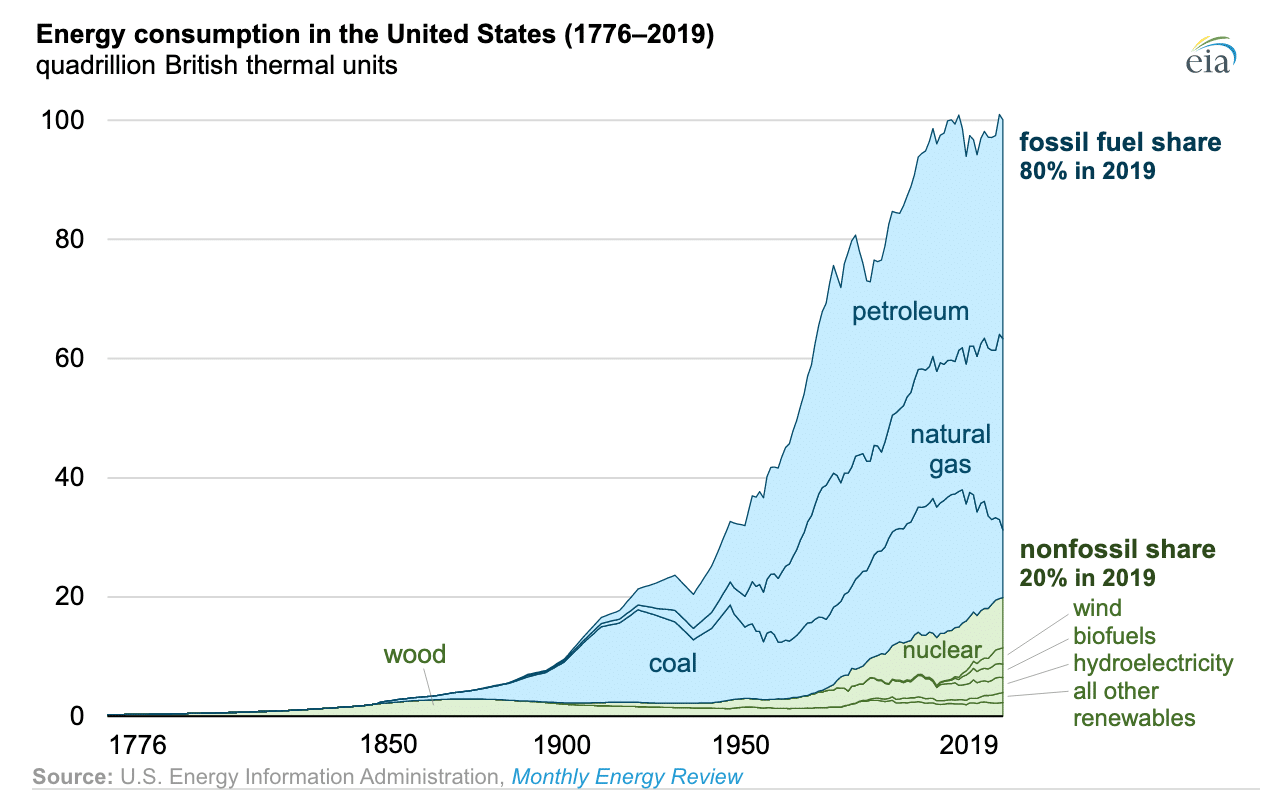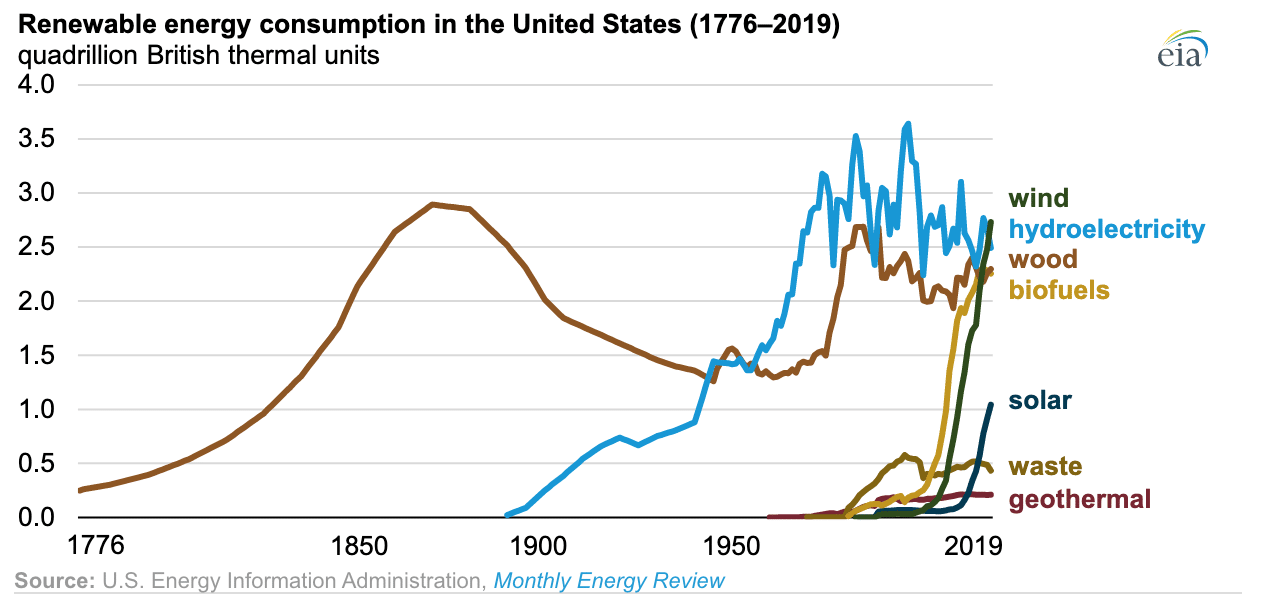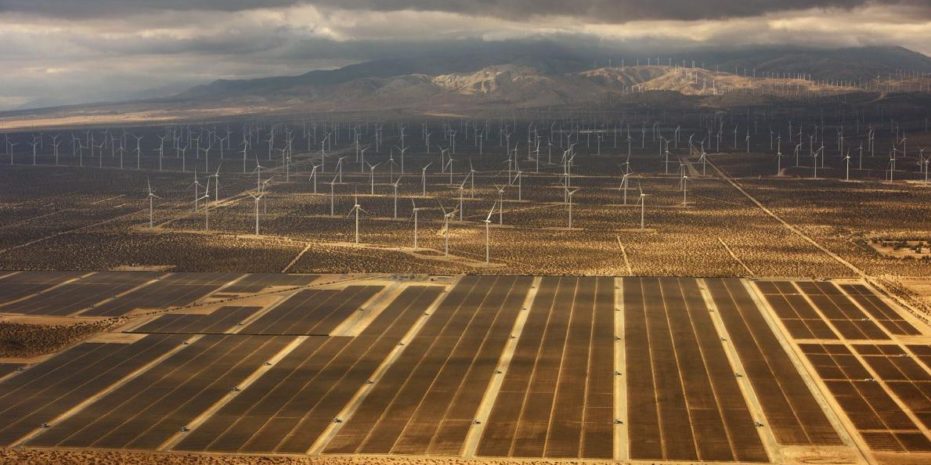In 2019, overall energy consumption in the United States hit 100 quadrillion British thermal units (Btu), nearly matching the all-time record set in 2018, according to the U.S. Energy Information Administration’s newest Monthly Energy Review. Yet it’s not just energy consumption that has been trending upwards — as non-fossil generation sources accounted for 20% of all energy consumed, the highest mark in history.

Nuclear energy contributed a record 8.5 quadrillion Btu to the overall energy consumption mix, with wind being the renewable energy source with the most consumption at 2.7 quadrillion Btu. After wind, hydroelectric contributed around 2.5 quadrillion Btu, biofuels came in at around 2.25 quadrillion Btu, solar recorded just over 1 quadrillion Btu and geothermal was about 0.25 quadrillion Btu.

In total, U.S. renewable energy consumption reached 11.5 quadrillion Btu in 2019, though this figure does include wood burning as a renewable energy source. 2019 marked the first time in 130 years that renewable energy consumption outpaced coal. This accomplishment has been driven by the large strides in generation capacity made by solar and wind in the last decade.
And while overall energy consumption has been steadily around 100 quadrillion Btu, the good news is that coal consumption fell by 15% in 2019. What’s more is that since the peak fossil fuel consumption mark of 86 quadrillion Btu in 2007, that figure has been falling steadily. In 2019, fossil fuel consumption was 80 quadrillion Btu, which may not seem like the biggest reduction over a 13-year period, but it works out to about half a percent a year.
This content is protected by copyright and may not be reused. If you want to cooperate with us and would like to reuse some of our content, please contact: editors@pv-magazine.com.









What is missing from the renewable energy consumption graph is the contribution from hydro-mechanical. Long before hydro was producing electricity it was producing horsepower to power thousands of industrial sites. We abandoned and squander this resource today, much of it was high capacity factor distributed power production.